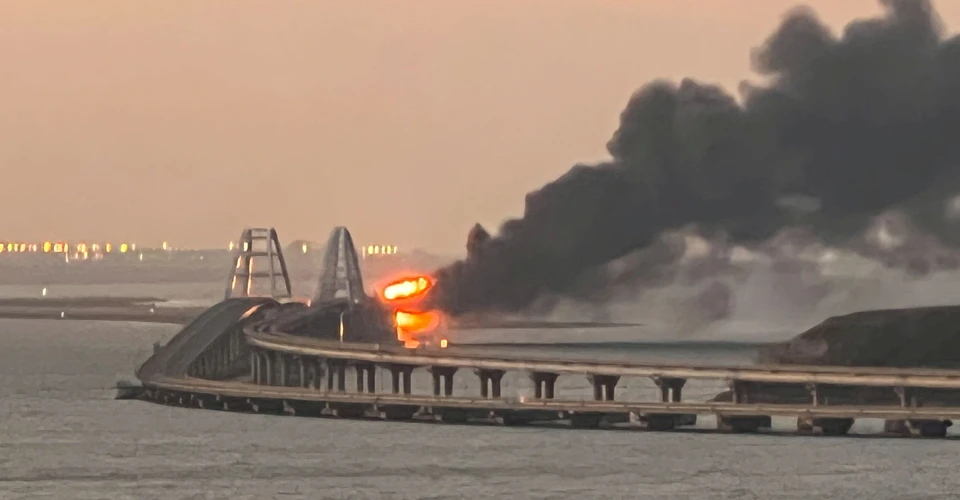
Russia’s new railway may render Crimean bridge useless, set to open in March
Petro Andriushchenko, head of the Center for the Study of Occupation, says that Russia has restored the railway from Mariupol to Ilovaisk and is working on a circular rail route to replace the Crimean bridge
He discussed this on Espreso TV.
“Apart from the railway that we have repeatedly talked about—from Rostov-on-Don, which emerged near the village of Malovodne and branched off towards Volnovakha and Mariupol—the Russians have now repaired and rebuilt, so to speak, the railway section from Ilovaisk to the Dolya station, which is directly in Donetsk, passing through Olenivka and then on to Volnovakha. This means that there is now a continuous railway from Mariupol to Ilovaisk, which has always existed.
What makes it significant and how it is used: First, it allows cargo to be easily delivered to places like Olenivka or Dolya station. Dolya station is the closest one to the former town of Maryinka, which was completely destroyed by the invaders, and is currently the nearest station to Kurakhove. This means that unloading and loading of both military and civilian cargo can now take place with ease,” Andriushchenko explained.
He noted that this railway section is also connected to Rostov through Ilovaisk and is capable of handling larger loads.
“We now understand that the cargo capacity that can be transported directly from Rostov-on-Don to Donetsk, Mariupol, Volnovakha, and Olenivka—essentially any point in the region—is significantly greater than what could be carried by the new railway they previously built through Malovodne. It seems that the bridges on that route cannot support heavy trains. As a result, we are already seeing that, for civilian cargo, coal from the Luhansk region is now reaching Mariupol port through Russia via Donetsk. We have never seen such a large train—88 wagons long—on this route before.
Similarly, fuel is now being transported directly to Donetsk. It is coming from Rostov-on-Don, and they are using up the reserves that were stored in Mariupol port since the summer, when tankers arrived. Now, the fuel is being moved to Donetsk, and from there, it is clear that it is being delivered to the front lines,” he said.
The railway also connects to Kurakhove, Pokrovsk, and the northern part of Donetsk region, which requires constant logistics. According to Andriushchenko, this poses a significant risk and is deeply concerning, because if the railway can handle 88 wagons of coal, it means it could also transport an equivalent number of tanks. Previously, the enemy did not have railway infrastructure capable of such capacity.
“And the worst part of this situation is that in March, they plan to open the next section of the railway, which will extend from Volnovakha through Rozivka, effectively closing the loop all the way to Dzhankoi. This essentially gives Russia the circular railway from Rostov to Rostov that they have been dreaming of.
All preparatory work on that section—between Volnovakha and Rozivka, including the occupied part of Vuhledar—is nearly complete, and they plan to fully launch it in March. If they succeed, it will be a massive challenge for us. This will provide a full-scale logistical backup not only for the front lines but also for occupied Donetsk, Zaporizhzhia, and Crimea, effectively negating the strategic importance of the Crimean bridge in terms of railway transportation.
So, even if we neutralize and ultimately dismantle the Crimean bridge, the Russians will still have a backup railway line that allows them to fully supply the occupied territories with any goods,” Andriushchenko explained.
- On February 20, it was reported that Russia had launched railway operations on the Rostov-on-Don – Mariupol – Volnovakha – Donetsk route to shorten the supply line for military equipment to the front.
- On February 21, reports emerged that Russians were forcing Ukrainians in the occupied parts of Donetsk region to build a railway line for the Russian military without pay, covering the route Rostov – Ilovaisk – Hranitne – Mariupol.
- News











































